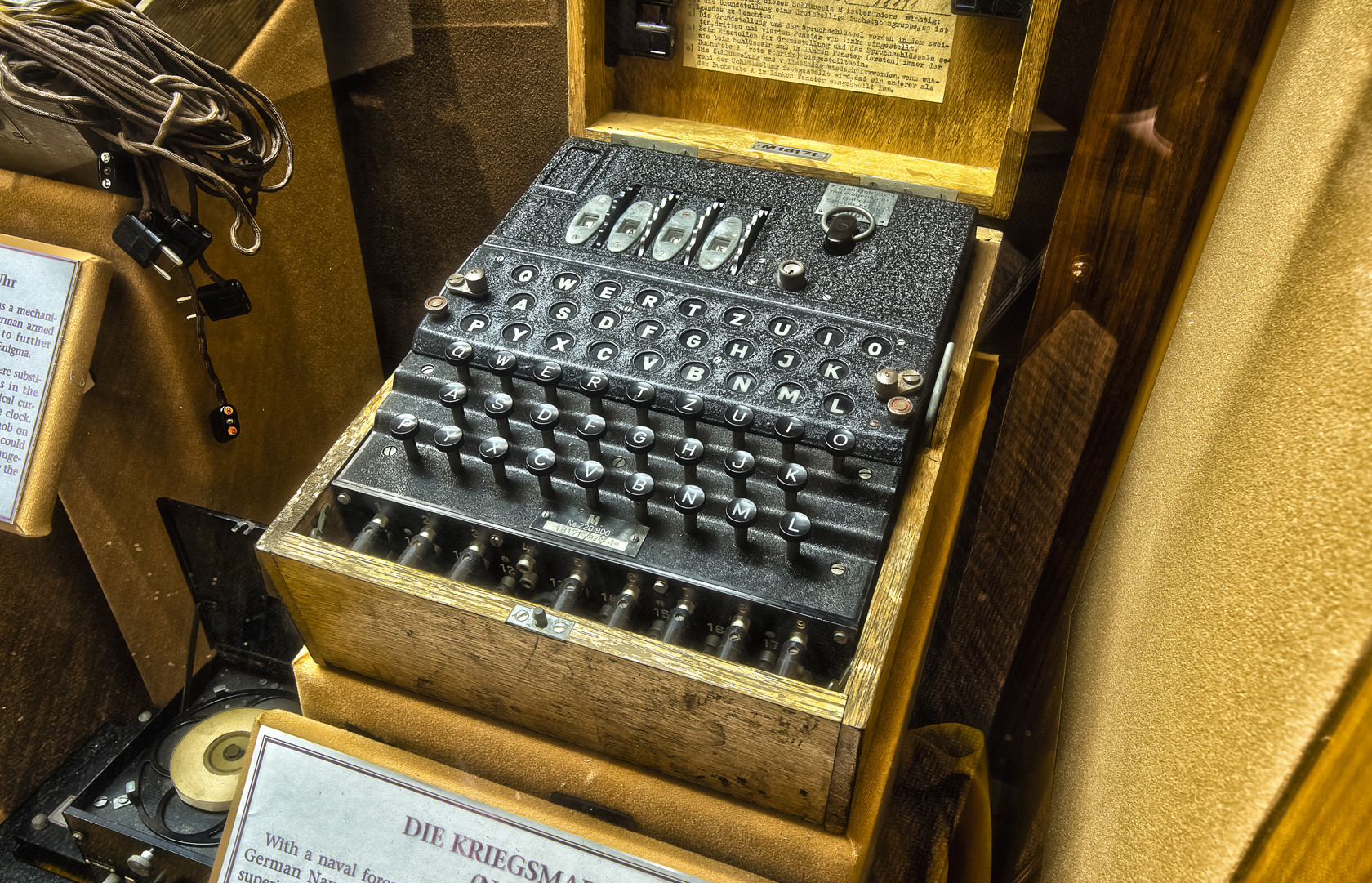Unlocking the Secrets of the Enigma Machine: How WWII's Powerful Encryption Tool Changed Communication

In cryptography, few devices have garnered as much intrigue and historical significance as the Enigma machine. With a design reminiscent of a typewriter, this remarkable contraption had a defining purpose during World War II: to encrypt and safeguard messages from prying eyes. Today, we look closer at the Enigma machine, exploring its origins, functionalities, and the fascinating mechanics that made it a key player in military communication.
Photo: Enigma machine at the National Cryptologic Museum
This animation video provides an excellent introduction to the Enigma Machine.
The Purpose of the Enigma Machine
To grasp the significance of the Enigma machine, we must first understand encryption. Imagine two friends, Alice and Bob, wanting to communicate secretly. They create a method to scramble their messages so no one else, like their sneaky acquaintance Eve, can understand them. Scrambling is known as encryption, while unscrambling—the method to reveal the original message—is called decryption.
Historically, effective communication during warfare is crucial. Commanders needed to relay orders and information to their troops while keeping sensitive details hidden from the enemy. While modern encryption relies on computer algorithms, the Enigma machine represented a sophisticated, mechanical approach to secure communication in the 1930s and 40s.
How the Enigma Machine Functioned
The Enigma machine operated as a highly advanced letter scrambler at its core. Developed in the early 1900s, it gained prominence when adopted by the German military during World War II.
The machine featured a keyboard with 26 letters and a lamp board displaying the corresponding encrypted letters. When a user pressed a key on the keyboard, a light would illuminate a different letter on the lamp board. This output was never the same as the letter pressed, creating an unpredictable and complex encryption process.
To visualize this, imagine Alice typing a simple message into the machine. The letters she inputs yield a scrambled sequence, then transmitted via radio and Morse code. Using their Enigma machine, the recipient would enter this sequence and observe the lamp board to decrypt the message into its original form.
The Mechanics Behind the Magic
So, how did the Enigma machine determine which letters to display? The answer lies in electric circuits and a clever arrangement of wires. Picture a simple circuit: a battery, wires, and a light bulb. Electricity flows through a closed loop, illuminating the bulb. If you introduce switches, you can control which paths the electricity takes, allowing different bulbs to light up depending on the switch turned on.
The genius of the Enigma machine came from its ability to scramble these connections. For instance, pressing an ‘A’ could light up an ‘H’ on the lamp board, while pressing a ‘C’ might illuminate a ‘B.’ The shifting pathways created a complex yet systematic means of encoding messages. The randomness of how letters connected ensured that even if the encrypted message were intercepted, deciphering it without the proper machine and settings would be nearly impossible.
Conclusion
The Enigma machine represents a remarkable feat of engineering and marks a pivotal moment in the evolution of cryptography. Its influence reached far beyond World War II, laying foundational concepts for modern encryption techniques. As we unravel its mysteries, we gain insight into a time when secure communication was a matter of life and death, and a simple machine could hold the key to victory.
In today’s digital age, appreciating the historical significance of devices like the Enigma machine serves as a reminder of the lengths to which humanity has gone to protect information and maintain secrecy. The legacy of the Enigma endures not just as a tool of war but as a symbol of ingenuity and the ongoing battle for confidentiality and transparency.
For more information about the Enigma Machine, please visit the EnigmaMuseum.com.

